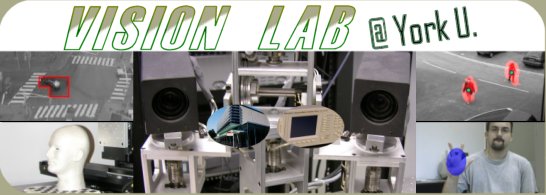Coarse-to-Fine Stereo with Accurate 3D Boundaries
Contributors
- Mikhail Sizintsev
- Richard P. Wildes
Abstract:
This research develops methods for efficient recovery of accurate binocular disparity
estimates in the vicinity of 3D surface discontinuities. Of particular concern are methods
that impact coarse-to-fine, local block-based matching, as it forms the basis of the fastest
and most resource efficient stereo computation procedures. A novel coarse-to-fine refinement
procedure that adapts match window support across scale to amelieorate corrupt disparity
estimation near boundaries is presented. Extensions are included to account for
half-occlusions and colour uniformity. Empirical results show that incorporation of these
advances in the standard coarse-to-fine, block matching framework reduces disparity errors by
more than a factor of two, while performing little extra computation, preserving low
computational complexity and the parallel/pipeline nature of the paradigm. Moreover, the
proposed advances are shown to be beneficial to coarse-to-fine global matchers as well.
Related Publications:
- M. Sizintsev and R. Wildes, Coarse-to-fine stereo vision with accurate 3D boundaries, Image and Vision Computing (IVC), 28, pp. 352-366, 2010.
- M. Sizintsev and R. P. Wildes, Computational analysis of binocular half-occlusions. In L. Harris and M. Jenkin (Eds.) Computational Vision in Neural and Machine Systems, Cambrdige University Press: Cambridge, UK, 2007. (See earlier.)
- M. Sizintsev and R.P. Wildes, Coarse-to-Fine Stereo Vision with Accurate 3-D Boundaries York University Technical Report CS-2006-07, June 28, 2006
- M. Sizintsev and R.P. Wildes, Efficient stereo with accurate 3-D boundaries. In Proceedings of the British Machine Vision Conference (BMVC), pp. 237-246, 2006.
|



